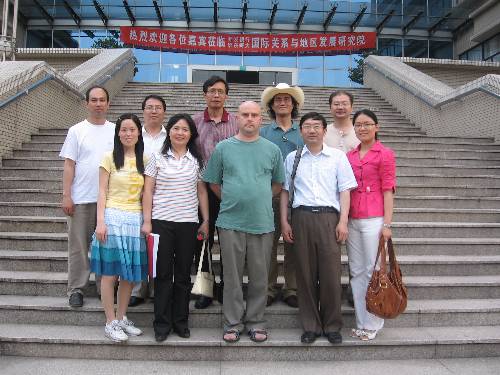

Bifurcation Theory : Starting from the time I was a Ph-D student, my interest is with the dynamics that arise after perurbation of degenerate dynamical systems. In particular, I have studied the case where a given vector field possesses a degenerate homoclinic orbit, See Ref [1,2,3,4,5,10]. We show the existence of chaos, strange attractors [1, 3] and the existence of infinitely many homoclinic doubling cascades [2,4]. Techniques developed in [1,3] and those in [7,8] (see section ('normal for theory' below) are used to investigate strange attractor with a large entropy [10]. This later results reveals the only knowledge of low order terms in asymptotics are not always sufficient to describe/anticipate the dynamics.
Mathematics in Biology: Classical normal form theory is used to investigated the dynamics of Predator-Prey systems with their bifurcation pattern. A 2-dimensional predator-prey model with five parameters is investigated, adapted from the Volterra-Lotka system by a non-monotonic response function. A description of the various domains of structural stability and their bifurcations is given. The bifurcation structure is reduced to four organising centres of codimension 3. Research is initiated on time-periodic perturbations by several examples of strange attractors. See [12,13]. In order to classify all possible Morse-Smale portrait, we proceed to a surgery
applied to limit-cycle and elaborate a classification of the Morse-Smale portraits 'Modulo' the limit cycles. This is of great help to anticipate the dynamics and their bifurcation.
Normal Form Theory
: Motivated by the research done in homoclinic bifurcations, we are interested in the Dulac map of germ of a vector field. A result is proposed in [6] int he case of a saddle in the three-dimensional space. Other result concern a direct (asymptotic) computation of a linearisation, conjugating the germ
with its linear part. First results are obtained in the case of a single vector field [7,8] and later in terms of family [17]. These results ohold in any dimension. A non mooth normal form theory is develop (which generalise that of Poincare-Dulac) that eliminate resonant term by resonant term. This non smooth normal form carries Dulac or compensator expansion. A Dulac expansion is formed by monomial terms that may contain a specific logarithmic factor. In compensator expansions this logarithmic factor is deformed. In [18] such expansions are studied in the frame of quasi periodic bifurcation. We study analytic properties of compensator and Dulac expansions in a single variable. We first consider Dulac expansions when the power of the logarithm is either 0 or 1. Here we construct an explicit exponential scaling in the space of coefficients, which in an exponentially narrow horn, up to rescaling and division, leads to a polynomial expansion. A similar result holds for the compensator case.
[1] Complexity in a hybrid Vanderpol equation, by W. D. Kalies, S. Kepley and V. Naudot, Internat. J. of Bifur. Chaos Appl. Sci. Engrg., 31, (2021), no13, 2150194, 20p.
[2] State dependent delay maps: numerical algorithms and dynamics of projections, by J. Mireles-James, F. Motta, V. Naudot, Experimental Mathematics., (2024), no0, 0, 1-24.
[3] Periodic Orbits for Phase dependent delayed differential equations, by N. Corbett, V. Naudot. To appear in Internat. J. of Bifur. Chaos Appl. Sci. Engrg.
[4] Q. Lu, V. Naudot, Bifurcation complexity from orbit-flip homoclinic orbit of weak type. To appear in International Journal of Bifurcation and Chaos. (2015)
[5] S. Ippolito, V. Naudot, E. Noonburg. Alternative Stable States, Coral Reefs, and Smooth Dynamics with a Kick. To appear in Bulletin of Mathematical Biology. (2015)

